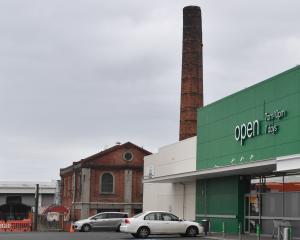
Niwa National Climate Centre principal scientist Chris Brandolino said it was normal in some areas of Otago to be dry, but not this dry.
At least 25mm of rainfall was needed to get back to what was considered normal for this time of year, Mr Brandolino said, and even then it might not make much difference to soil moisture levels.
"You don't want really heavy rainfall rates because that is more likely to run off. That's why we [Niwa] often say we need a sustained rainfall over days or weeks to return to normal conditions.
"I think for the rest of the summer ... above average rainfall, which I think farmers will want, is unlikely.''
Any rainfall was drying off quickly, as summer evapotranspiration rates were about 3mm a day, depending on the type of soil, Mr Brandolino said.
That meant significant rain was needed in central and eastern Otago regions to make an impact.
"If Mother Nature gives you 10mm of rain, some is going to run off [because of how hard the ground is] and some is going to evaporate ...''
Niwa's Alexandra [11mm] and Wanaka [14mm] stations recorded their fourth-lowest rainfall totals ever for December.
"That region [Central Otago] in general was quite dry,'' Mr Brandolino said.
"It's El Nino. It's a very strong El Nino. El Nino is the main climate driver going back to winter. That's what's really driving much of the weather.''
Dunedin also recorded below-average rainfall with just 31mm of rain during the month.
Rainfall in the next seven days from Dunedin northward and inland would be "as little as 5mm to 7mm'', Mr Brandolino said.
"It's persistent rainfall that would start making dents.''
Dunedin Rain Effects hydrologist David Stewart said 25mm of rain was needed over 24 hours to ease the extreme dry.
It would be enough to get grass back to normal out on the Taieri but it would still be tough for farmers in the regions, Mr Stewart said.
"Central Otago is a drought area, anyway,'' he said.
"It gets 300mm to 500mm [of rain] a year, which is simply not enough. Dry conditions in Central Otago are not unusual. [It] would be a good start ... [but] it seems unlikely we will get that.''
Most irrigated areas were losing far more than 3mm of moisture per day to evaporation but some non-irrigated areas were not, simply because there was no moisture there to evaporate, Mr Stewart said.
"It's not extreme yet [but] in another two to three weeks, if there's no significant rain ...''
Minister for Primary Industries Nathan Guy was considering extending the drought status (medium-scale adverse event) beyond February, a spokesman for Mr Guy said.
In August, the Government provided an extra $100,000 to help in drought-affected eastern South Island areas.
An announcement would be made on this soon.












